Indoor pepper growing might seem like a challenge reserved for seasoned gardeners, but trust me, with a few clever tricks and a dash of DIY spirit, you can be harvesting vibrant, flavorful peppers right from your windowsill! Forget those bland, store-bought peppers – imagine the satisfaction of snipping off a fiery habanero or a sweet bell pepper, grown with your own two hands, just steps from your kitchen.
For centuries, humans have cultivated peppers, tracing back to ancient civilizations in South America. These vibrant fruits weren’t just a source of food; they held cultural and medicinal significance. Now, we’re bringing that tradition indoors, adapting it to modern living. But why bother with the effort? Well, for starters, indoor pepper growing allows you to extend the growing season, enjoying fresh peppers year-round, regardless of your climate. Plus, it’s a fantastic way to add a touch of green to your living space and connect with nature, even in the heart of the city.
Let’s face it, gardening can sometimes feel intimidating, especially when you’re dealing with finicky plants. That’s where these DIY tricks come in! I’m going to share some simple, effective hacks that will demystify the process and set you up for success. Whether you’re a complete beginner or have a bit of gardening experience, these tips will help you overcome common challenges and unlock the secrets to a bountiful indoor pepper harvest. Get ready to transform your home into a pepper paradise!
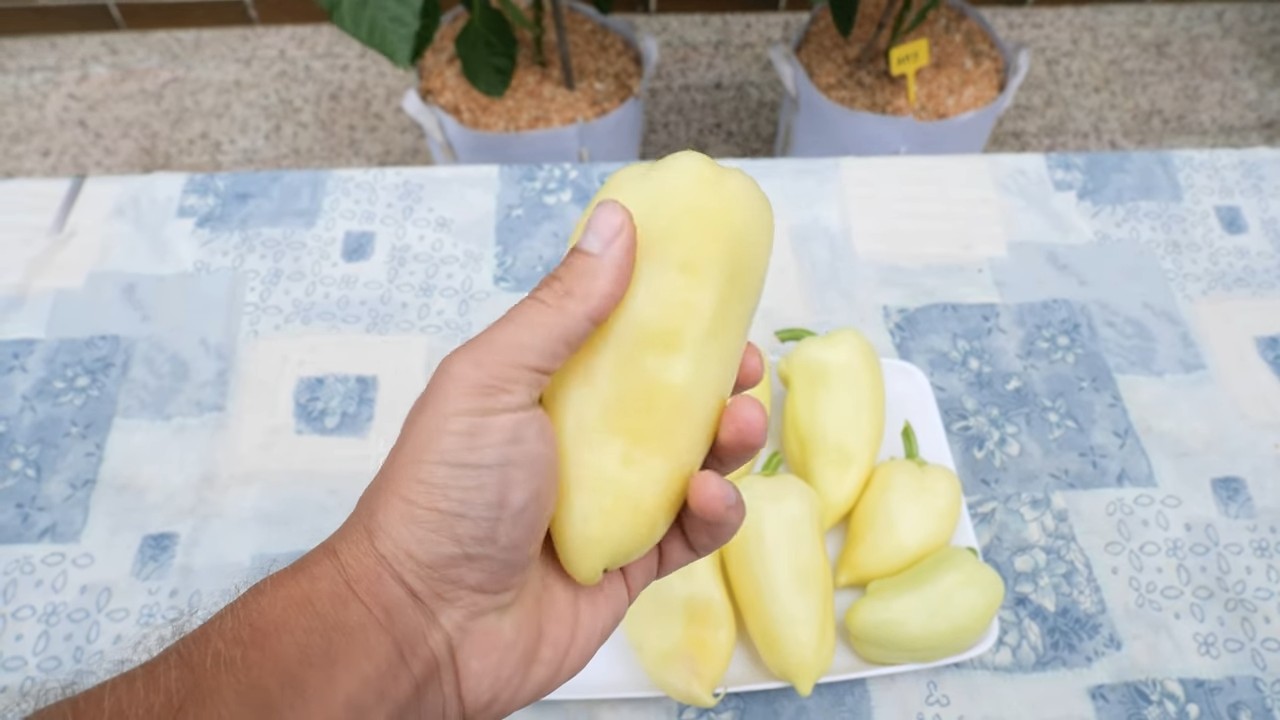
Growing Peppers Indoors: A Beginner’s Guide to Spicy Success
Hey there, fellow gardening enthusiasts! Ever dreamt of having fresh, vibrant peppers right at your fingertips, even when the weather outside is frightful? Well, you’re in luck! Growing peppers indoors is totally achievable, and I’m here to guide you through the whole process. It’s easier than you might think, and the reward of harvesting your own homegrown peppers is oh-so-satisfying. Let’s get started!
Choosing the Right Pepper Variety
Not all peppers are created equal, especially when it comes to indoor growing. Some varieties are simply better suited for container life than others. Here’s what I recommend:
* Compact Varieties: Look for peppers labeled as “dwarf,” “compact,” or “bush” varieties. These tend to stay smaller and are perfect for pots. Think of varieties like:
* Thai Peppers: These pack a punch and don’t need a ton of space.
* Jalapeños: A classic choice that does well indoors.
* Bell Peppers (specifically smaller varieties): While larger bell peppers can be grown indoors, smaller varieties like ‘Mini Bell’ are easier to manage.
* Poblano Peppers: These are a mild pepper that is great for stuffing.
* Consider Heat Level: Choose peppers you actually enjoy eating! There’s no point in growing super-hot peppers if you can’t handle the spice.
* Read Seed Packets Carefully: Pay attention to the plant’s mature size and light requirements. This will help you choose the right variety for your space.
Gathering Your Supplies
Before we dive into planting, let’s make sure you have everything you need. Here’s a checklist:
* Pepper Seeds: Choose your desired variety from a reputable source.
* Seed Starting Tray or Small Pots: These are perfect for starting your seeds indoors.
* Seed Starting Mix: This is a lightweight, sterile mix that’s ideal for germination.
* Larger Pots (at least 5 gallons): Once your seedlings are big enough, they’ll need to be transplanted into larger pots.
* Potting Soil: Choose a well-draining potting mix specifically formulated for containers.
* Grow Lights (optional but highly recommended): Peppers need a lot of light, especially indoors.
* Watering Can or Spray Bottle: For gentle watering.
* Fertilizer: A balanced fertilizer formulated for vegetables.
* Small Shovel or Trowel: For transplanting.
* Plant Labels: To keep track of your different pepper varieties.
Starting Your Pepper Seeds
This is where the magic begins! Starting your seeds indoors gives them a head start before the outdoor growing season (or, in our case, the indoor growing season!).
1. Prepare Your Seed Starting Tray: Fill your seed starting tray or small pots with seed starting mix. Moisten the mix thoroughly, but don’t let it get soggy.
2. Sow the Seeds: Plant 2-3 seeds per cell or pot, about ¼ inch deep.
3. Cover the Seeds: Gently cover the seeds with more seed starting mix.
4. Water Gently: Use a spray bottle to mist the surface of the soil.
5. Provide Warmth: Peppers need warmth to germinate. Aim for a soil temperature of 75-85°F (24-29°C). You can use a heat mat to help maintain the temperature.
6. Provide Light: Place the seed starting tray under grow lights or in a very sunny window. If using grow lights, keep them a few inches above the soil surface.
7. Keep the Soil Moist: Check the soil daily and mist with water as needed to keep it consistently moist.
8. Be Patient: Pepper seeds can take anywhere from 7-21 days to germinate, so don’t give up!
Transplanting Your Seedlings
Once your seedlings have developed a few sets of true leaves (the leaves that look like miniature pepper plant leaves, not just the initial seed leaves), it’s time to transplant them into larger pots.
1. Prepare Your Larger Pots: Fill your 5-gallon (or larger) pots with well-draining potting mix.
2. Gently Remove the Seedlings: Carefully remove the seedlings from the seed starting tray or small pots. Be gentle to avoid damaging the roots. If the roots are tightly bound, gently loosen them with your fingers.
3. Plant the Seedlings: Dig a hole in the potting mix large enough to accommodate the seedling’s root ball. Place the seedling in the hole and gently backfill with potting mix.
4. Water Thoroughly: Water the newly transplanted seedlings thoroughly.
5. Provide Support (Optional): If you’re growing a taller pepper variety, you may want to provide support with a stake or tomato cage.
Providing the Right Environment
Peppers are sun-loving plants, so providing the right environment is crucial for their success indoors.
* Light: Peppers need at least 6-8 hours of direct sunlight per day. If you don’t have a sunny window, invest in grow lights. LED grow lights are energy-efficient and work well for peppers. Position the lights a few inches above the plants and adjust as they grow.
* Temperature: Peppers thrive in warm temperatures, ideally between 70-80°F (21-27°C). Avoid placing them near drafts or cold windows.
* Humidity: Peppers prefer moderate humidity. If your indoor air is dry, you can increase humidity by using a humidifier or placing a tray of water near the plants.
* Air Circulation: Good air circulation helps prevent fungal diseases. You can use a small fan to gently circulate the air around your plants.
Watering and Fertilizing
Proper watering and fertilizing are essential for healthy pepper plants and abundant harvests.
* Watering: Water your pepper plants when the top inch of soil feels dry to the touch. Water deeply, until water drains out of the bottom of the pot. Avoid overwatering, as this can lead to root rot.
* Fertilizing: Feed your pepper plants with a balanced fertilizer every 2-3 weeks. Look for a fertilizer specifically formulated for vegetables. Follow the instructions on the fertilizer label. You can also use organic fertilizers like compost tea or fish emulsion.
Pollinating Your Pepper Plants
Peppers are self-pollinating, but indoor plants may need a little help.
* Hand Pollination: Use a small paintbrush or cotton swab to gently transfer pollen from one flower to another. You can also gently shake the plants to help release pollen. Do this every few days, especially when the plants are flowering.
Dealing with Pests and Diseases
Even indoors, pepper plants can be susceptible to pests and diseases.
* Common Pests: Aphids, spider mites, and whiteflies are common pests that can infest pepper plants. Inspect your plants regularly for signs of infestation.
* Control Methods:
* Insecticidal Soap: Spray your plants with insecticidal soap to kill aphids, spider mites, and whiteflies.
* Neem Oil: Neem oil is another effective treatment for pests.
* Handpicking: You can also handpick pests off your plants.
* Common Diseases: Fungal diseases like powdery mildew and blossom end rot can affect pepper plants.
* Prevention:
* Good Air Circulation: Ensure good air circulation to prevent fungal diseases.
* Proper Watering: Avoid overwatering, as this can create a favorable environment for fungal diseases.
* Calcium Supplement: Blossom end rot is caused by a calcium deficiency. Add a calcium supplement to your potting mix or spray your plants with a calcium solution.
Harvesting Your Peppers
The moment you’ve been waiting for! Harvesting your peppers is the most rewarding part of the process.
* When to Harvest: Peppers are typically ready to harvest when they’ve reached their mature size and color. The exact timing will depend on the variety.
* How to Harvest: Use a sharp knife or scissors to cut the peppers from the plant. Be careful not to damage the plant.
* Enjoy Your Harvest: Use your homegrown peppers in your favorite recipes! You can also dry or freeze them for later use.
Troubleshooting Tips
* Yellowing Leaves: This could be a sign of overwatering, underwatering, or nutrient deficiency. Adjust your watering schedule and fertilize as needed.
* Dropping Flowers: This can be caused by temperature fluctuations, lack of pollination, or stress. Ensure your plants are in a stable environment and hand-pollinate as needed.
* Slow Growth: This could be due to insufficient light, temperature, or nutrients. Provide adequate light, warmth, and fertilizer.
Growing
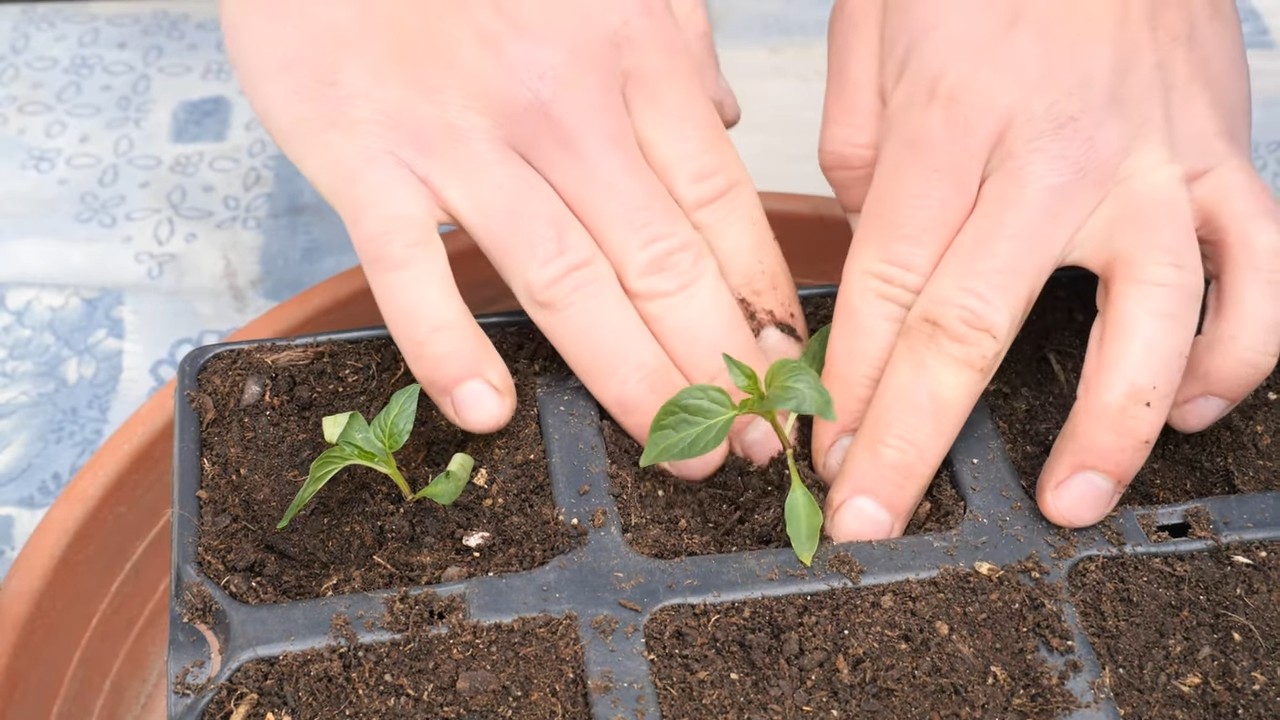
Conclusion
So, there you have it! Mastering the art of indoor pepper growing is not only achievable but also incredibly rewarding. We’ve explored a simple yet effective DIY trick that can transform your windowsill into a thriving miniature pepper farm, regardless of your outdoor space or climate. This isn’t just about saving money; it’s about connecting with your food, understanding the growing process, and enjoying the unparalleled flavor of freshly harvested peppers right from your own home.
Why is this DIY trick a must-try? Because it empowers you to take control of your food source, even in the smallest of living spaces. Imagine the satisfaction of adding a vibrant, spicy kick to your meals with peppers you nurtured from seed to fruit. This method is also incredibly adaptable. You can experiment with different varieties of peppers, from the mildest bell peppers to the fiery habaneros, tailoring your harvest to your specific taste preferences.
Consider these exciting variations to further personalize your indoor pepper growing experience:
* Hydroponics Adaptation: While we focused on soil-based growing, this trick can be adapted for hydroponic systems. Simply transfer your seedlings to a hydroponic setup once they’ve established a strong root system. This can lead to even faster growth and higher yields.
* Vertical Gardening: Maximize your space by creating a vertical pepper garden. Use stacked planters or hanging baskets to grow multiple pepper plants in a small area. This is a fantastic option for those with limited windowsill space.
* Companion Planting: Enhance your pepper plants’ health and productivity by incorporating companion plants like basil, marigolds, or onions. These plants can deter pests and attract beneficial insects, creating a thriving ecosystem within your indoor garden.
* Colored Grow Lights: Experiment with different colored grow lights to optimize pepper growth. Blue light promotes vegetative growth, while red light encourages flowering and fruiting. A combination of both can lead to the best results.
Don’t be intimidated by the prospect of growing your own peppers indoors. This DIY trick is designed to be accessible to everyone, regardless of their gardening experience. With a little patience, attention, and the right resources, you’ll be harvesting delicious peppers in no time.
We wholeheartedly encourage you to give this DIY trick a try. Start small, experiment with different varieties, and don’t be afraid to make mistakes. Gardening is a learning process, and every challenge is an opportunity to grow, both literally and figuratively.
Most importantly, we want to hear about your experiences! Share your successes, your challenges, and your unique variations in the comments below. Let’s build a community of indoor pepper growers and learn from each other. Your insights could inspire others to embark on their own pepper-growing journey. So, grab your seeds, your soil, and your grow lights, and get ready to experience the joy of indoor pepper growing! We can’t wait to see what you create.
FAQ
Frequently Asked Questions About Indoor Pepper Growing
Q: What are the best pepper varieties to grow indoors?
A: While you can technically grow any pepper variety indoors, some are better suited for container gardening and indoor environments. Compact varieties like bell peppers (especially smaller cultivars), chili peppers (such as Thai peppers or jalapenos), and ornamental peppers tend to thrive indoors. These varieties are generally more manageable in terms of size and require less space. However, don’t be afraid to experiment with other varieties if you have the space and resources. Just be sure to provide adequate support for larger plants as they grow.
Q: How much light do indoor pepper plants need?
A: Pepper plants are sun-loving vegetables and require at least 6-8 hours of direct sunlight per day to produce a good harvest. If you don’t have a sunny windowsill, you’ll need to supplement with artificial grow lights. LED grow lights are a great option because they are energy-efficient and provide the full spectrum of light that pepper plants need. Position the grow lights about 6-12 inches above the plants and adjust as they grow. You can also use a timer to ensure that your plants receive the correct amount of light each day.
Q: What type of soil is best for indoor pepper plants?
A: Pepper plants need well-draining soil that is rich in organic matter. A good potting mix specifically formulated for vegetables is ideal. Avoid using garden soil, as it can be too heavy and may contain pests or diseases. You can also amend your potting mix with compost or other organic matter to improve drainage and fertility. Make sure the pot you use has drainage holes to prevent waterlogging, which can lead to root rot.
Q: How often should I water my indoor pepper plants?
A: Water your pepper plants when the top inch of soil feels dry to the touch. Avoid overwatering, as this can lead to root rot. When you water, water deeply until water drains out of the drainage holes. Be sure to empty the saucer underneath the pot to prevent the plants from sitting in water. The frequency of watering will depend on factors such as the size of the pot, the type of soil, and the temperature and humidity of your home.
Q: How often should I fertilize my indoor pepper plants?
A: Pepper plants are heavy feeders and require regular fertilization to produce a good harvest. Start fertilizing your plants a few weeks after transplanting them into their final pots. Use a balanced fertilizer that is specifically formulated for vegetables. Follow the instructions on the fertilizer label for application rates. You can also use organic fertilizers such as compost tea or fish emulsion. Fertilize your plants every 2-3 weeks during the growing season.
Q: How do I pollinate my indoor pepper plants?
A: Pepper plants are self-pollinating, but they may need a little help to pollinate indoors, especially if there is no wind or insect activity. You can hand-pollinate your plants by gently shaking the flowers or using a small paintbrush to transfer pollen from one flower to another. You can also use a fan to create a gentle breeze that will help to distribute the pollen.
Q: What are some common pests and diseases that affect indoor pepper plants?
A: Common pests that can affect indoor pepper plants include aphids, spider mites, and whiteflies. These pests can be controlled with insecticidal soap or neem oil. Common diseases that can affect indoor pepper plants include powdery mildew and root rot. Powdery mildew can be treated with a fungicide, and root rot can be prevented by avoiding overwatering. Regularly inspect your plants for signs of pests or diseases and take action promptly to prevent them from spreading.
Q: How long does it take for indoor pepper plants to produce fruit?
A: The time it takes for indoor pepper plants to produce fruit depends on the variety of pepper and the growing conditions. Generally, it takes about 60-90 days from transplanting for pepper plants to start producing fruit. Be patient and continue to provide your plants with the care they need, and you will eventually be rewarded with a bountiful harvest.
Q: Can I overwinter my indoor pepper plants?
A: Yes, you can overwinter your indoor pepper plants. Before the first frost, prune your plants back to about 6-8 inches tall. Move them to a cool, dark place, such as a basement or garage. Water them sparingly, only when the soil is completely dry. In the spring, move your plants back to a sunny location and resume regular watering and fertilizing. They should start producing fruit again in a few weeks.
Q: My pepper plant is flowering, but the flowers are falling off. What’s wrong?
A: Flower drop can be caused by several factors, including temperature stress (too hot or too cold), inconsistent watering, lack of pollination, or nutrient deficiencies. Ensure your plants are receiving consistent watering and fertilization, and that the temperature is within the optimal range (65-80°F). Hand-pollinating can also help. If the problem persists, consider testing your soil to rule out nutrient deficiencies.

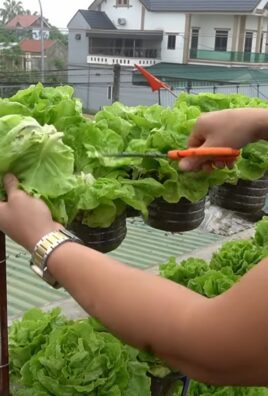
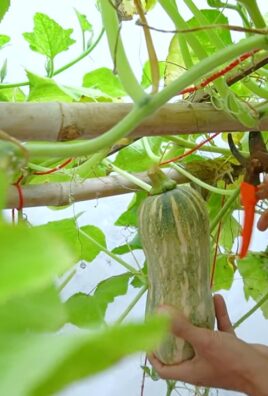
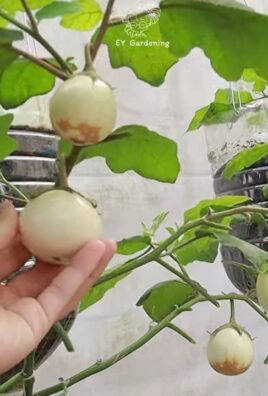
Leave a Comment